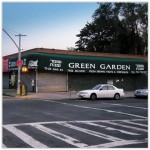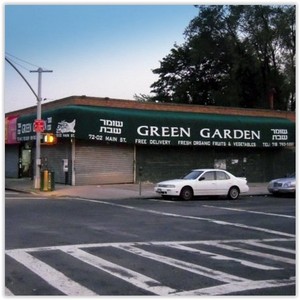 Kew Gardens Hills is a middle class neighborhood in the middle of the New York City borough of Queens.
Kew Gardens Hills is a middle class neighborhood in the middle of the New York City borough of Queens.
HISTORY
In the northwestern part of the neighborhood was the location of the 120 acre Spring Hill Farm.The farm was part of the Francis Lewis estate during colonial times. By 1762 the farm was owned by Colonel Thomas Willet, High Sheriff of Flushing, and was sold to Cadwallader Colden, lieutenant governor for the Province of New York. In 1763 Colden built the Spring Hill House on the property. In 1783 the property was confiscated by the government because Cadwallader’s son David was a loyalist to the monarchy. By 1894 the Durkee family owned the property and sold it to the Cedar Grove Cemetery Corporation. The Spring Hill House became the office of the Cedar Grove Cemetery, until the house was later destroyed by a fire. Cadwallader Colden and Thomas Willet are among those who are buried on the property on what is now the grounds of the Mount Hebron Cemetery.
In the 19th century the area of Kew Gardens Hills was known as Head of the Fly, for its location at the headwaters of the Flushing Creek (or Flushing River). Fly or vly, being the Dutch word for swamp. One of the oldest roads through the area was called the Vleigh Road, and still exists today as Vleigh Place.
Timothy Jackson operated a horse boarding stable near where the intersection of Park Drive East and Union Turnpike, or the Kew Gardens Interchange is today.This is the near the current location of the Jamaica Yard. The subway yard was previously a horse race course built by Timothy Jackson and was known as Whitepot Race & Track.Although the train yard is not in Jamaica, it is named Jamaica because the yard feeds the subway lines which begin (or end) in Jamaica. This area was an extension of Timothy Jackson’s Willow Glen Farm for which the farmhouse was located south of Union Turnpike in the neighborhood of Jamaica that is now called Briarwood.In the 1750s, William Furman was the owner of the farm he named Willow Glen. Today Willow Lake, at the southern end of Flushing Meadows–Corona Park, retains the Willow name.
The municipal government of the Town of Flushing, which dated back to colonial times, along with other municipal township governments in Queens County, was incorporated into the Borough of Queens on January 1, 1898. Later, the area, was named after Kew Gardens, which in 1909 was renamed after Royal Botanic Gardens, Kew in London, England in the United Kingdom.
The area’s earliest modern homes were built in 1917 off of Union Turnpike, but in the early 20th century, the area was known as Queens Valley and consisted mostly of farmland. By the 1920s many of the farms were sold to golf clubs or country clubs. The golf courses that made up the area include the Spring Hill Golf Course, Queens Valley Golf Course, Pomonok Country Club, and Arrowbrook Country Club. In 1939, the Arrowbrook Country Club was the home of the “Summer City Hall” of Mayor La Guardia.
One road that ran through the area was called Quarrelsome Lane., which ran from Jamaica Road to Fresh Meadow Road; the road is now known as 75th Avenue. Jamaica Road, the most direct route between the villages of Flushing and Jamaica, is now Kissena Boulevard and becomes Parsons Boulevard at the intersection of Quarrelsome Lane.Growth to Kew Gardens Hills came when Kew Gardens, Queens, to the south, gained a subway line at Queens Boulevard in 1936 and Flushing Meadows–Corona Park, directly to the northwest of the neighborhood, hosted the 1939 New York World’s Fair. Early residents were mostly German, Irish and Italian. Many were relocating from Brooklyn and Manhattan. The area was hilly and Kew Gardens was known as a prestigious Queens neighborhood and so developers changed its name from Queens Valley to Kew Gardens Hills.
The first Queen of Peace mass took place in 1939. Main Street Cinemas opened in 1940. Property along 144th street, now known as Main Street, was seized by the city to complete the building of Main Street from northern Flushing. Main Street was paved and bus routes began to serve the area in 1941. The Jewish Center of Kew Gardens Hills was established in 1941. The Queens County Savings Bank opened its branch in 1949 and local school, P.S. 164, also known as the Queens Valley School, also opened its doors that year.
In 1965, the neighborhood gained news notoriety when five-year-old Eddie Crimmins Jr. and four-year-old Missy Crimmins vanished from their garden apartment at 150–22 72 Drive, on July 14. Missy’s body was found the same day in a vacant lot on 71st Avenue at 162nd Street (the area where the 107th Precinct is located today.) Eddie’s body was found five days later near 68th Drive and the entrance to north-bound Van Wyck Expressway. The children’s mother, Alice Crimmins, was convicted in 1971, and imprisoned, in the death of her children. She was paroled in 1977.
On September 16, 2010, an EF1 tornado touched down in Flushing Meadows-Corona Park, causing widespread damage to cars and homes in the Kew Gardens Hills area. John Bowne High School located along Main Street at the edge of the CUNY Queens College campus, directly across from Mt. Hebron Cemetery, was the only New York City Public School building to sustain physical damage related to the storm and was subsequently closed the day following the storm.
DEMOGRAPHICS
Races
The neighborhood contains an established Orthodox and Haredi Jewish population and some Israelis, Bukharan Jews as well as smaller groups of Latinos, Koreans, Chinese, Indians, Afghanis and African Americans. Kew Gardens Hills is home to the largest concentration of Afghanis in the New York metropolitan area.
Religions
There are several dozen houses of worship in Kew Gardens Hills, many of them Jewish.
Established in 1941, the Jewish Center of Kew Gardens Hills is the only traditional Conservative synagogue located in the heart of Kew Gardens Hills. By the 1950s, the Orthodox Jewish community began to take root. The first orthodox synagogue was formed in 1950 on Parsons Blvd and 78th road when the Jewish Center of Torath Emeth was formed with Rabbi Joel Laks as the spiritual leader. Initial congregants included the future rabbi of Young Israel of Kew Gardens Hills, and families of other yet-to-be-built synagogues in the neighborhood. The following year, the Young Israel Congregation of Kew Gardens Hills was founded in 1951 with 15 families. That congregation now consists of 450 families.Congregation Machzikei Hadas formed by Rabbi Yosef Gelernter on 73rd Avenue, and is home to the first mikveh in Kew Gardens Hills. At Vleigh Place and Main Street, the City of New York developed and constructed a small park in 1957–58. In March 1960, the City Council named it Freedom Square to commemorate the one hundredth anniversary of the birth of Theodor Herzl, founder of present-day Zionism. As the neighborhood has a large Orthodox Jewish population, many residents have also moved from traditionally Jewish neighborhoods such as Crown Heights in Brooklyn. The Jewish population in Kew Gardens Hills have contributed to the co-naming of five streets in the neighborhood. Co-named streets include:
- Haym Salomon Square (geometrically a triangle), across from the Kew Gardens Hills branch of the Queens Borough Public Library, named for the Revolutionary
- Rabbi Kirshblum Triangle named for the first Rabbi of the Kew Gardens Hills Jewish Center
- Freedom Square named in honor of Theodor Herzl’s quest for a Jewish homeland
- Rabbi Avraham Schechter Way named for a prominent resident of the community is located between 147th Street and 150th Street along 72nd Driv
- Rabbi Joel Laks Way on 78th Road between Parsons Boulevard and 160 Street, named for the founder of the first orthodox synagogue in the area
- Abe Wolfson Triangle named for an environmental activist and one of the founders of the Queens Historical Society is located along Kissena Boulevard near 75th Avenue.
Other houses of congregation are not Jewish. The Roman Catholic Church Queen of Peace is located on Main Street at 77th Road. St. Nicholas of Tolentine is located on Parsons Boulevard behind east of Parkway Village. The Lutheran Church of the Ascension is located on Main Street just south of Union Turnpike.
A sizable Muslim and Sikh population exists in areas of Kew Gardens Hills as well, most notably on the northern side with several stores catering to that population.

